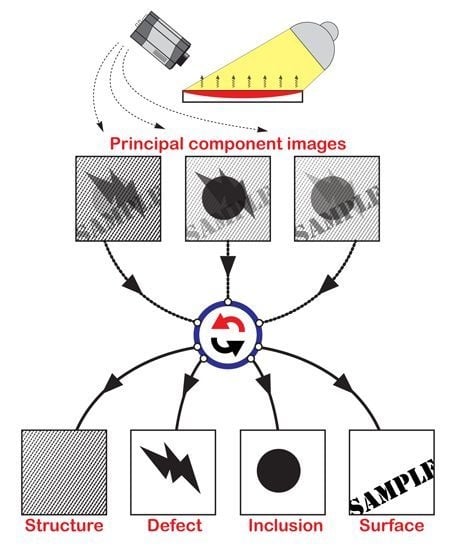Extraction of Independent Structural Images for Principal Component Thermography
Abstract
:1. Introduction
2. Methodology
Principal Component Thermography Approach
3. Extraction of Independent Components
3.1. Proposed Approach
- Archetypes do exist.
- Existing archetype images do not necessarily form an orthonormal basis.
- Since principal components form a complete orthonormal basis, one can use this basis for constructing the archetypes.
- High-order principal components represent noise-like images and provide little information in the original stack of thermographic images. Thus, meaningful archetypes can be constructed using only a few low-order PCs.
- More than one PC may contain image patterns which belong to same archetype (e.g., the wood structure may be seen in PC2-7 in Figure 5). Thus, extraction of a single archetype requires using available PCs in such a way that an individual independent feature is extracted while all (or most) others are suppressed.
- Collect a stack of raw thermographic images and convert this stack to a 2D array
- Apply SVD to extract principal components.
- Leave only meaningful PCs (those which determine most of variance of raw data).
- Choose point(s) where only one independent pattern is present (e.g., only the pattern describing the defective area). These points are selected manually as it is important to find the point where only one independent pattern is present and thus Expression (6) is satisfied.
- Create a large number of random linear combinations from the PCs extracted. For research presented in this article, a set of 18,000 random combinations was constructed.
- Sort the new stack of images in such a way that the brightness of pixels in point(s) chosen change in a harmonic way.
- Find all pixels which happen to have similar modulation. These pixels belong to the same archetype which is present in the point(s) chosen.
3.2. Synthetic Example
4. Experimental Application of the Proposed Approach
4.1. Experimental Setup and Calculation Deta
4.2. Non-Destructive Analysis of Works of Art
4.3. Inspection of Composite Materials
5. Conclusions
Acknowledgments
Author Contributions
Conflicts of Interest
References
- Janků, M.; Březina, I.; Grošek, J. Use of Infrared Thermography to Detect Defects on Concrete Bridges. Procedia Eng. 2017, 190, 62–69. [Google Scholar] [CrossRef]
- Lagüela, S.; Solla, M.; Armesto, J.; González-Jorge, H. Comparison of infrared thermography with ground-penetrating radar for the non-destructive evaluation of historic masonry bridges. In Proceedings of the 11th International Conference on Quantitative InfraRed Thermography (QIRT 2012), Naples, Italy, 11–14 June 2012. [Google Scholar]
- Soroko, M.; Howell, K. Infrared Thermography: Current Applications in Equine Medicine. J. Equine Vet. Sci. 2018, 60, 90–96. [Google Scholar] [CrossRef]
- Kandlikar, S.G.; Perez-Raya, I.; Raghupathi, P.A.; Gonzalez-Hernandez, J.-L.; Dabydeen, D.; Medeiros, L.; Phatak, P. Infrared imaging technology for breast cancer detection—Current status, protocols and new directions. Int. J. Heat Mass Transf. 2017, 108, 2303–2320. [Google Scholar] [CrossRef]
- Vavilov, V. Thermal Non-Destructive Testing: Short History, State-of-the-Art and Trends. In Proceedings of the 10th European Conference on Non-Destructive Testing (ECNDT), Moscow, Russia, 7–11 June 2010. [Google Scholar]
- Vavilov, V. Thermal non destructive testing: Short history and state-of-art. In Proceedings of the 1992 International Conference on Quantitative InfraRed Thermography (QIRT), Paris, France, 7–9 July 1992. [Google Scholar]
- Delanthabettu, S.; Menaka, M.; Venkatraman, B.; Raj, B. Defect depth quantification using lock-in thermography. QIRT J. 2015, 12, 37–52. [Google Scholar] [CrossRef]
- Fedala, Y.; Streza, M.; Sepulveda, F.; Roger, J.-P.; Tessier, G.; Boué, C. Infrared lock-in thermography crack localization on metallic surfaces for industrial diagnosis. JNDE 2014, 33, 335–341. [Google Scholar] [CrossRef]
- Breitenstein, O.; Warta, W.; Langenkamp, M. Lock-in Thermography: Basics and Use for Evaluating Electronic Devices and Materials, 2nd ed.; Springer: Berlin/Heidelberg, Germany, 2010; pp. 22–26. ISBN 978-3-642-02416-0. [Google Scholar]
- Nolte, P.; Malvisalo, T.; Wagner, F.; Schweiser, S. Thermal diffusivity of metals determined by lock-in thermography. QIRT J. 2017, 14, 218–225. [Google Scholar] [CrossRef]
- D’Accardi, E.; Palumbo, D.; Tamborrino, R.; Galietti, U. Quantitative analysis of thermographic data through different algorithms. Proc. Struct. Integr. 2018, 8, 354–367. [Google Scholar] [CrossRef]
- Ciampa, F.; Mahmoodi, P.; Pinto, F.; Meo, M. Recent Advances in Active Infrared Thermography for Non-Destructive Testing of Aerospace Components. Sensors 2018, 18, 609. [Google Scholar] [CrossRef] [PubMed]
- Maldague, X.; Marinetti, S. Pulse Phase Infrared Thermography. J. Appl. Phys. 1996, 79, 2694–2698. [Google Scholar] [CrossRef]
- Ibarra-Castanedo, C.; Sfarra, S.; Ambrosini, D.; Paoletti, D.; Bendada, A.; Maldague, X. Subsurface defect characterization in artworks by quantitative pulsed phase thermography and holographic interferometry. QIRT J. 2008, 5, 131–149. [Google Scholar] [CrossRef]
- Shepard, S.M.; Hou, Y.; Ahmed, T.; Lhota, J.R. Reference-free analysis of flash thermography data. Proc. SPIE 2006, 6205, 1–7. [Google Scholar] [CrossRef]
- Shepard, S.M. Advances in Pulsed thermography. Proc. SPIE 2001, 4360, 511–515. [Google Scholar]
- Rajic, N. Principal component thermography for flaw contrast enhancement and flaw depth characterization in composite structures. Compos. Struct. 2002, 58, 521–528. [Google Scholar] [CrossRef]
- Marinetti, S.; Grinzato, E.; Bison, P.G.; Bozzi, E.; Chimenti, M.; Pieri, G.; Salvetti, O. Statistical analysis of IR thermographic sequences by PCA. Infrared Phys. Technol. 2004, 46, 85–91. [Google Scholar] [CrossRef]
- Vavilov, V.P.; Nesteruk, D.A.; Shiryaev, V.V.; Swiderski, W. Application of principal component analysis in dynamic thermal testing data processing. Russ. J. Nondestruct. 2008, 44, 509–516. [Google Scholar] [CrossRef]
- Griefahn, D.; Wollnack, J.; Hintze, W. Principal component analysis for fast and automated thermographic inspection of internal structures in sandwich parts. J. Sens. Sens. Syst. 2014, 3, 105–111. [Google Scholar] [CrossRef]
- Świta, R.; Suszyński, Z. Processing of thermographic sequence using principal component analysis. Meas. Autom. Monitor. 2015, 61, 215–218. [Google Scholar]
- Gavrilov, D.; Maev, R.G.; Almond, D. A review of imaging methods in analysis of works of art. Thermographic imaging method in art analysis. Can. J. Phys. 2014, 92, 341–364. [Google Scholar] [CrossRef]
- Yousefi, B.; Sfarra, S.; Ibarra-Castanedo, C.; Maldague, X. Comparative analysis on thermal non-destructive testing imagery applying Candid Covariance-Free Incremental Principal Component Thermography (CCIPCT). Infrared Phys. Technol. 2017, 85, 163–169. [Google Scholar] [CrossRef]
- Gavrilov, D. Development and Optimization of Thermographic Techniques for Non-Destructive Evaluation of Multilayered Structures. Ph.D. Thesis, University of Windsor, Windsor, ON, Canada, 2014. [Google Scholar]
- Bondy, M.; Gavrilov, D.; Seviaryna, I.; Maev, R. Practical application of acoustic and thermographic methods for analysis of impact damage to composite avionic parts. In Proceedings of the 14th International Workshop on Advanced Infrared Technology and Applications (AITA 2017), Quebec City, QC, Canada, 27–29 September 2017. [Google Scholar]
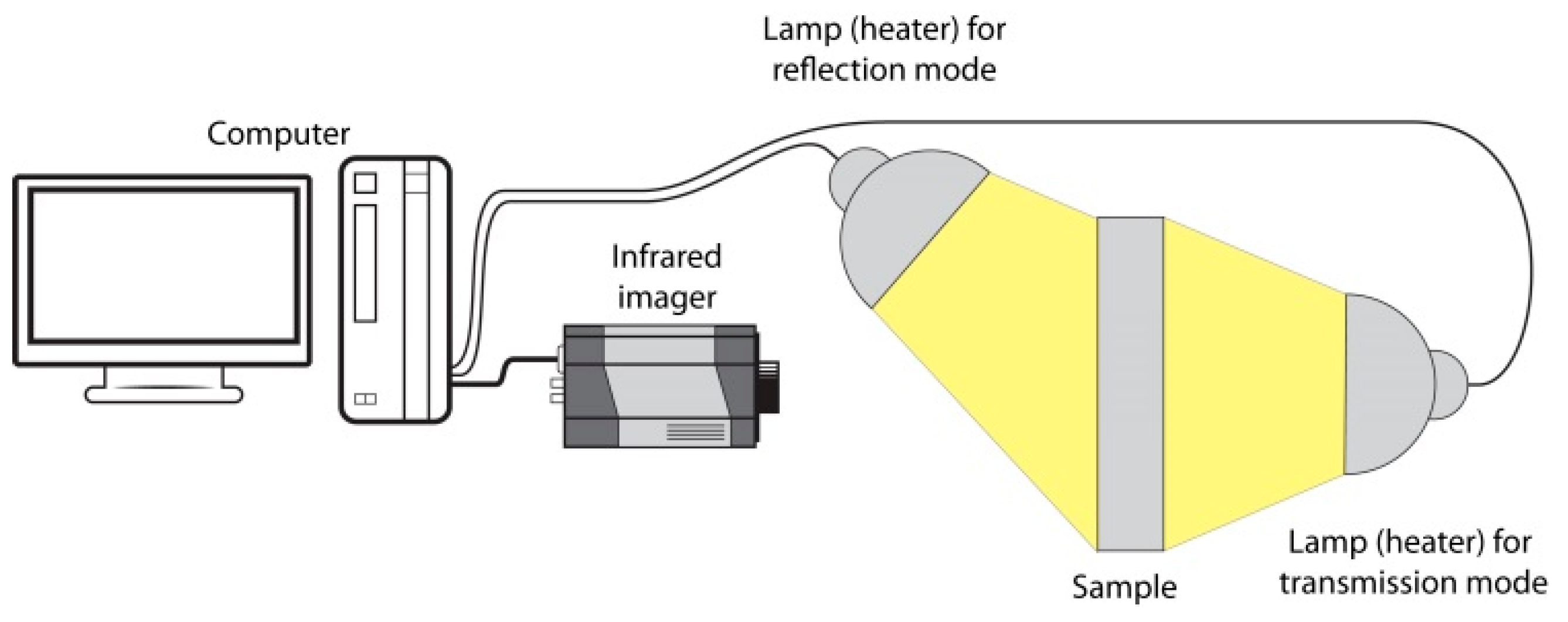

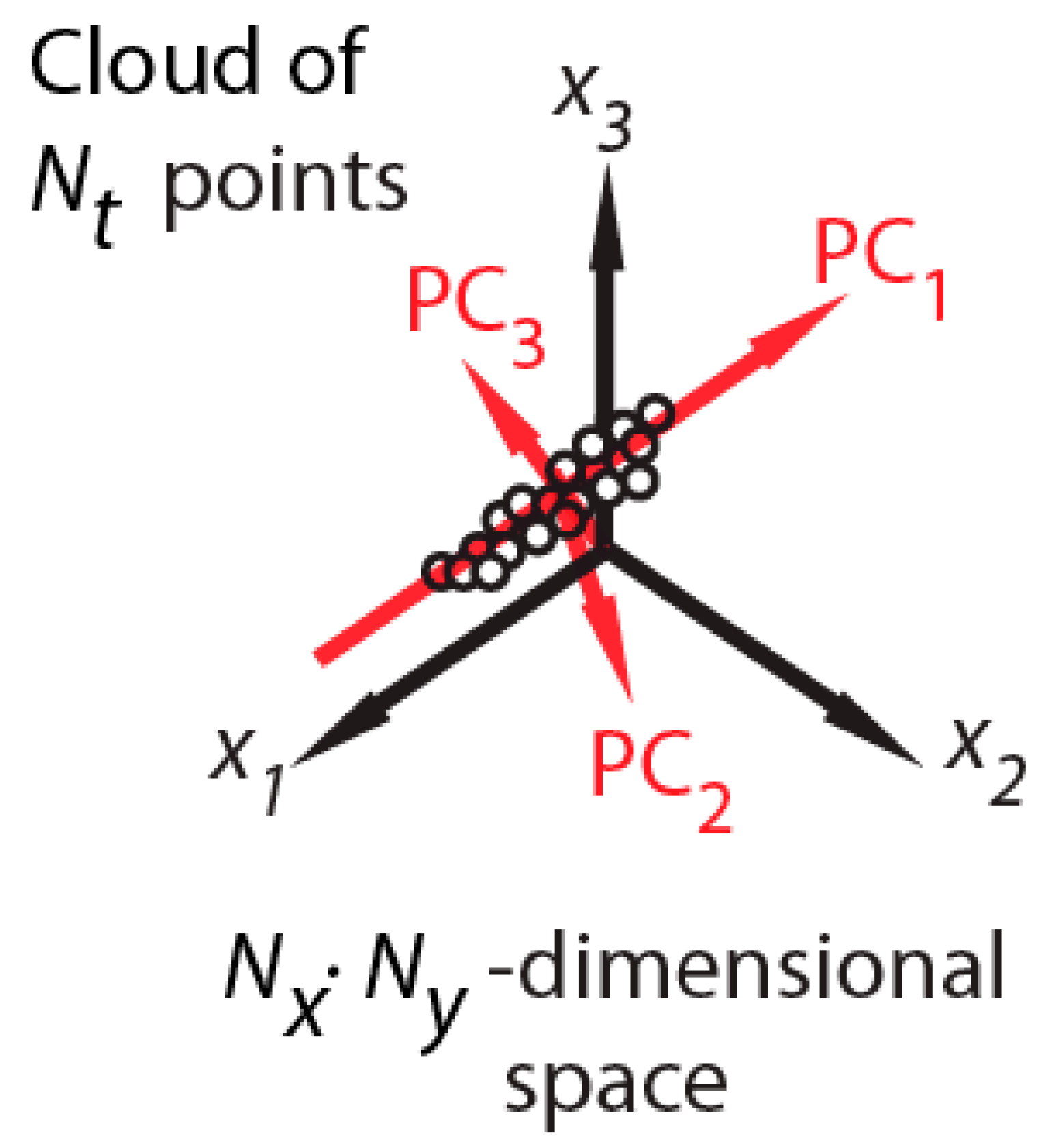

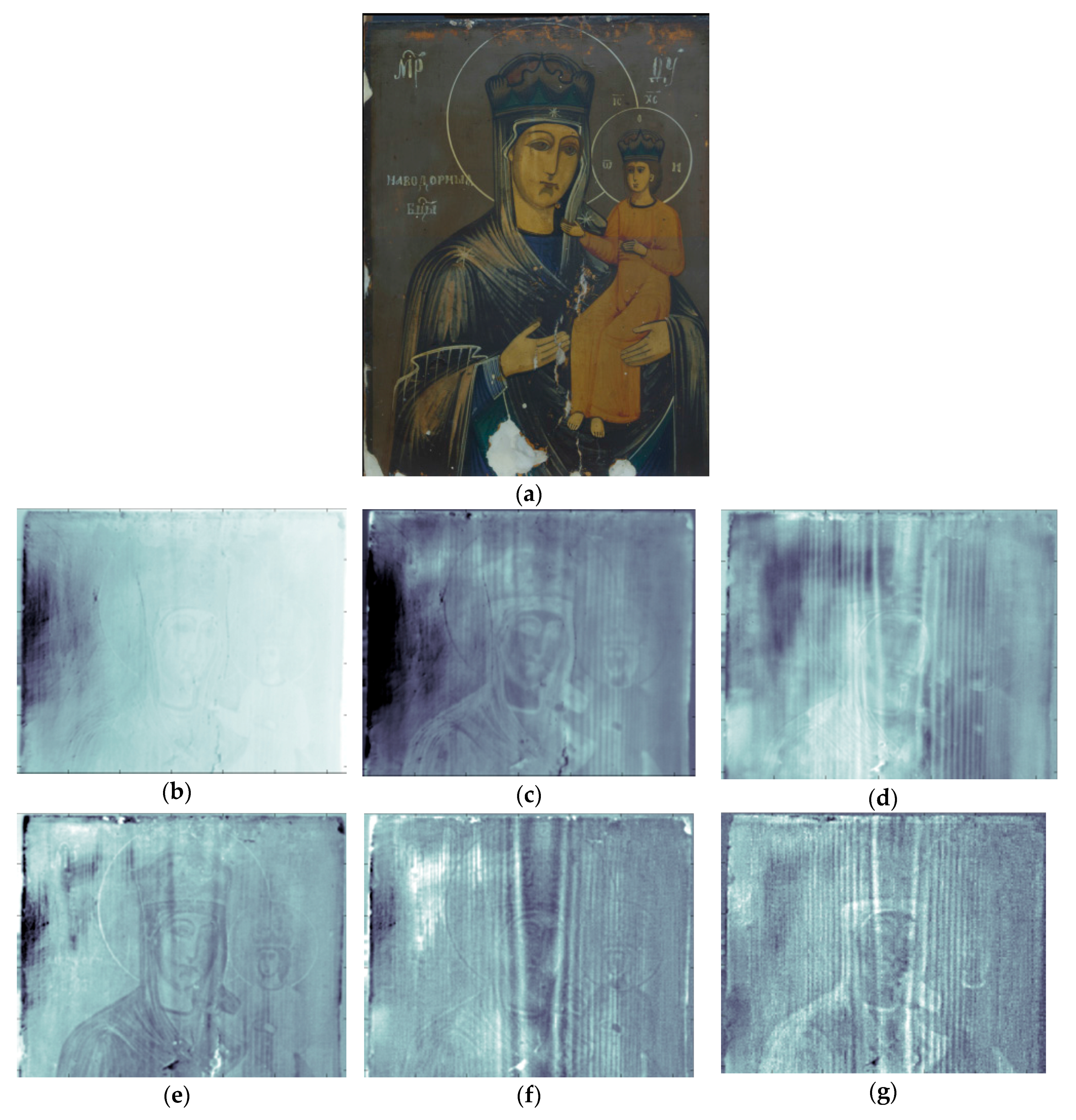

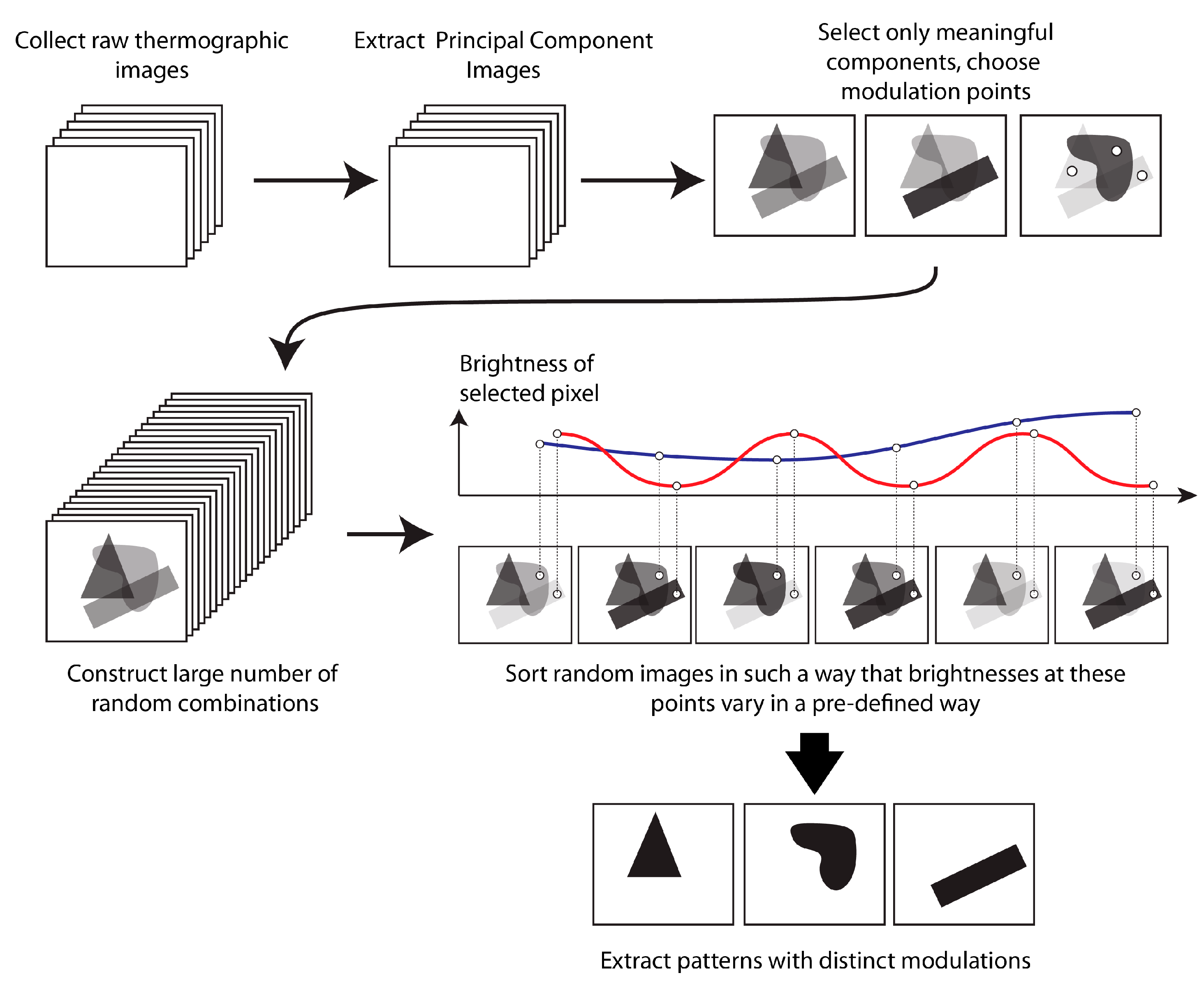
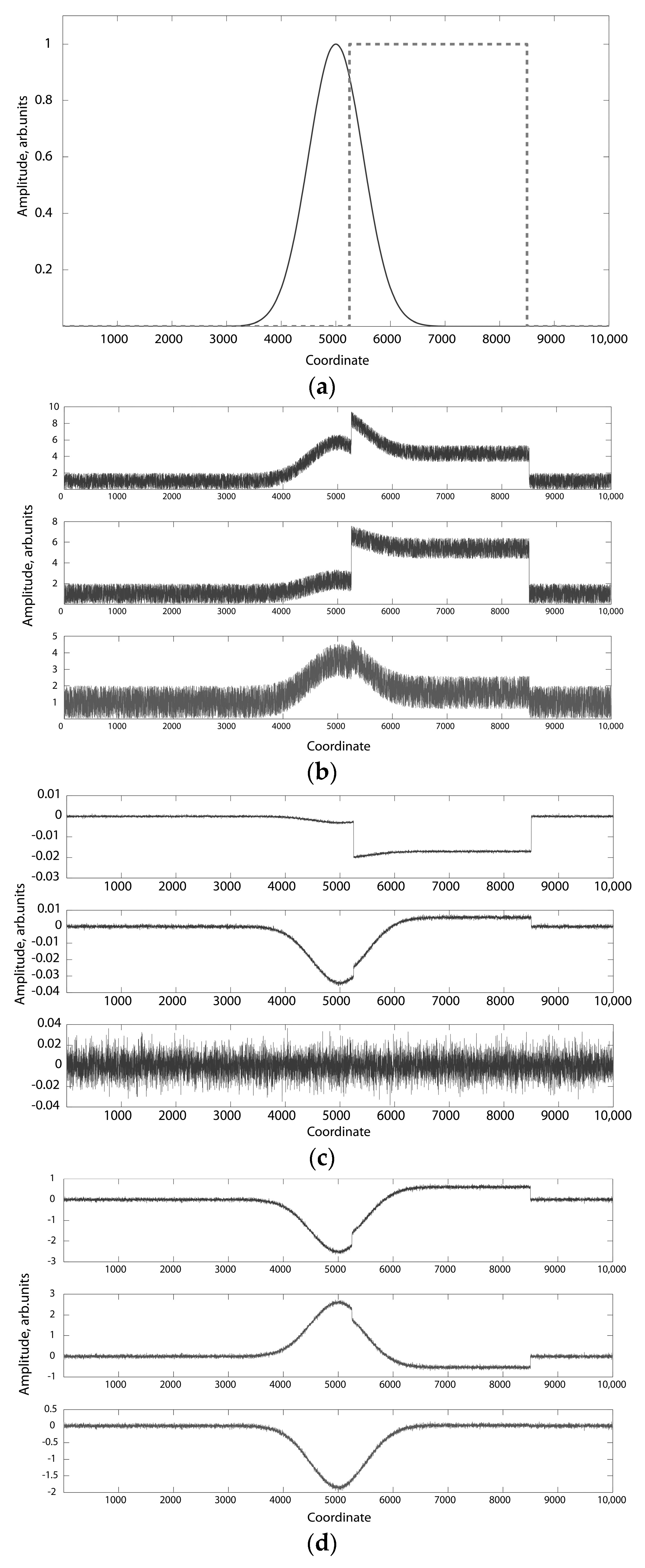
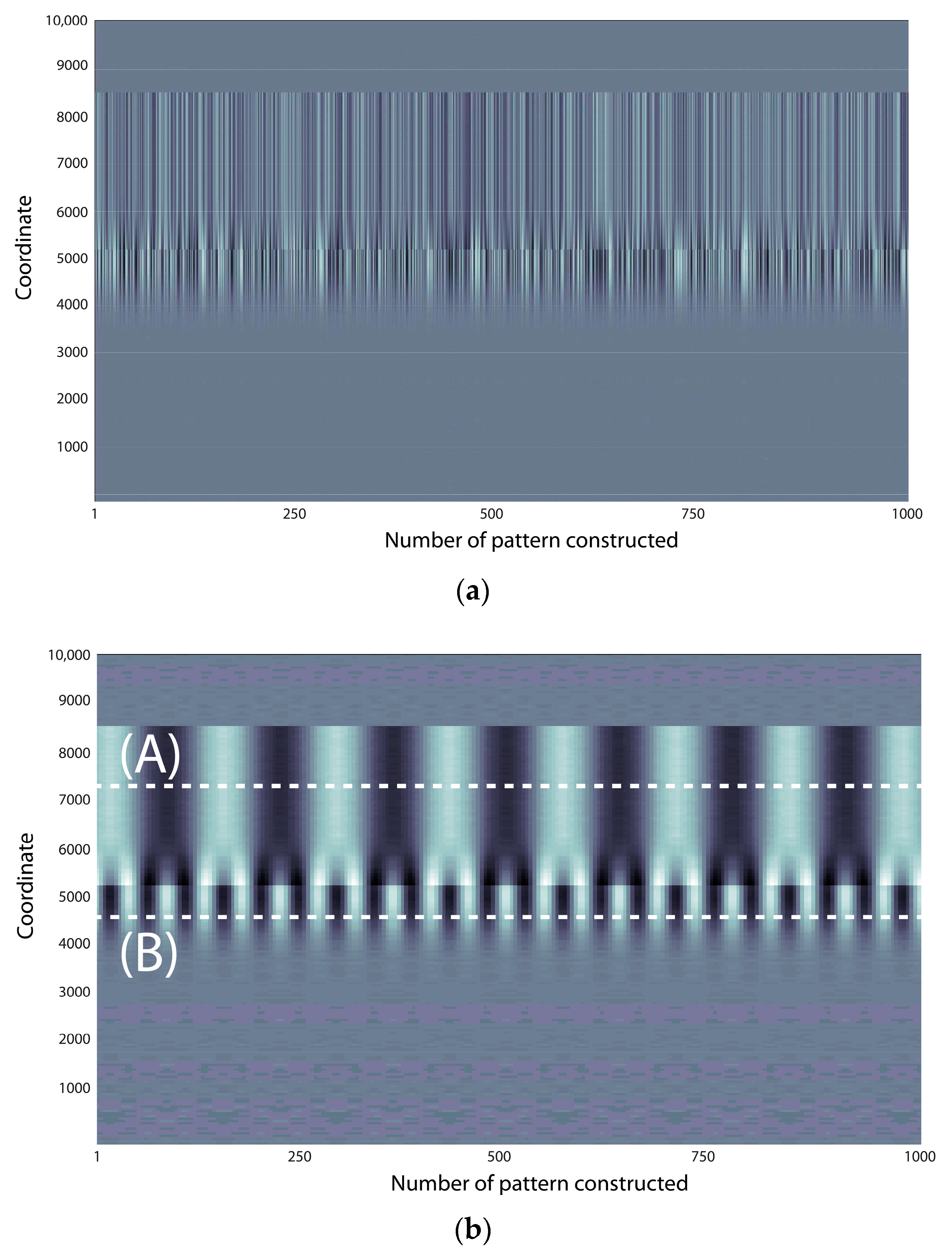
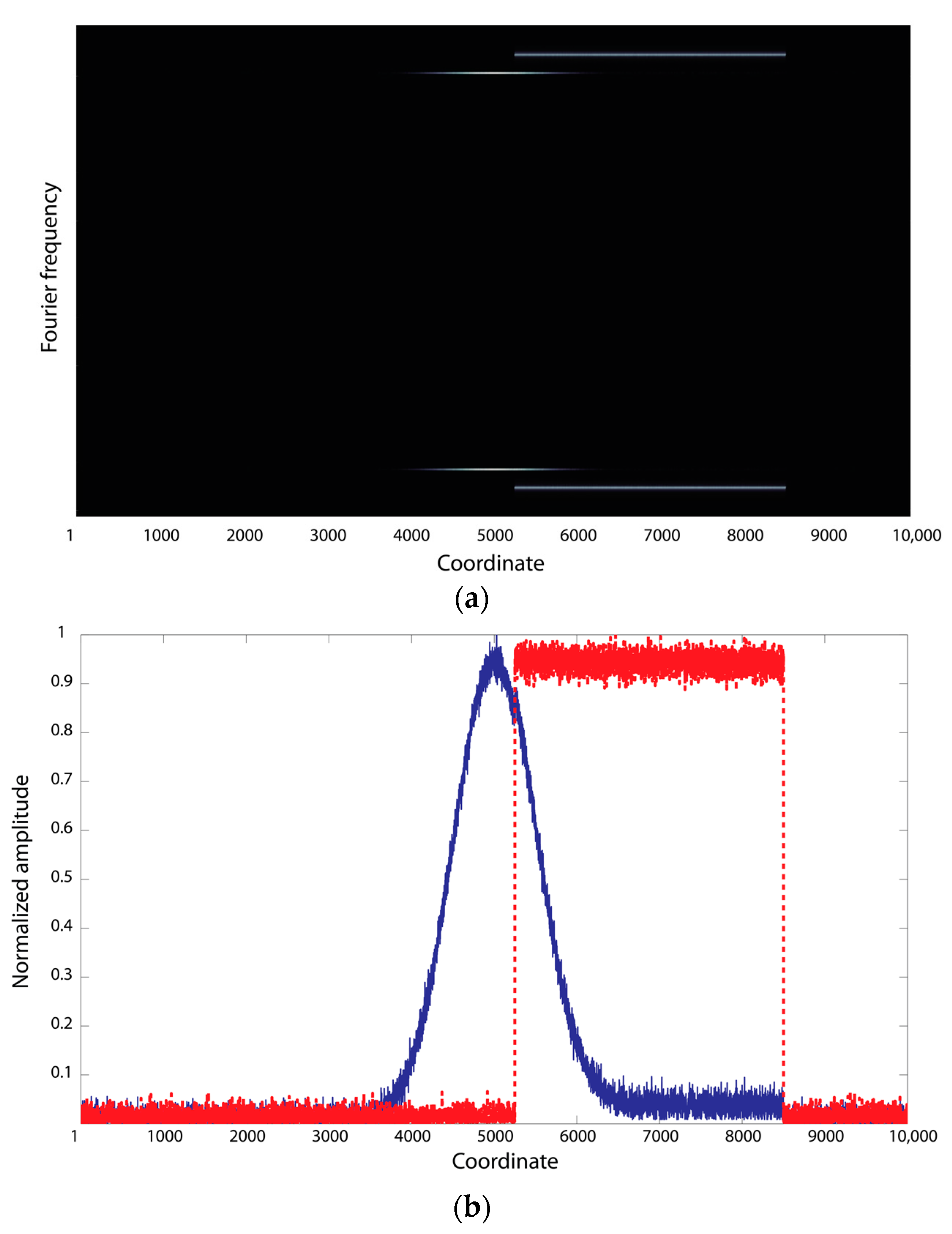
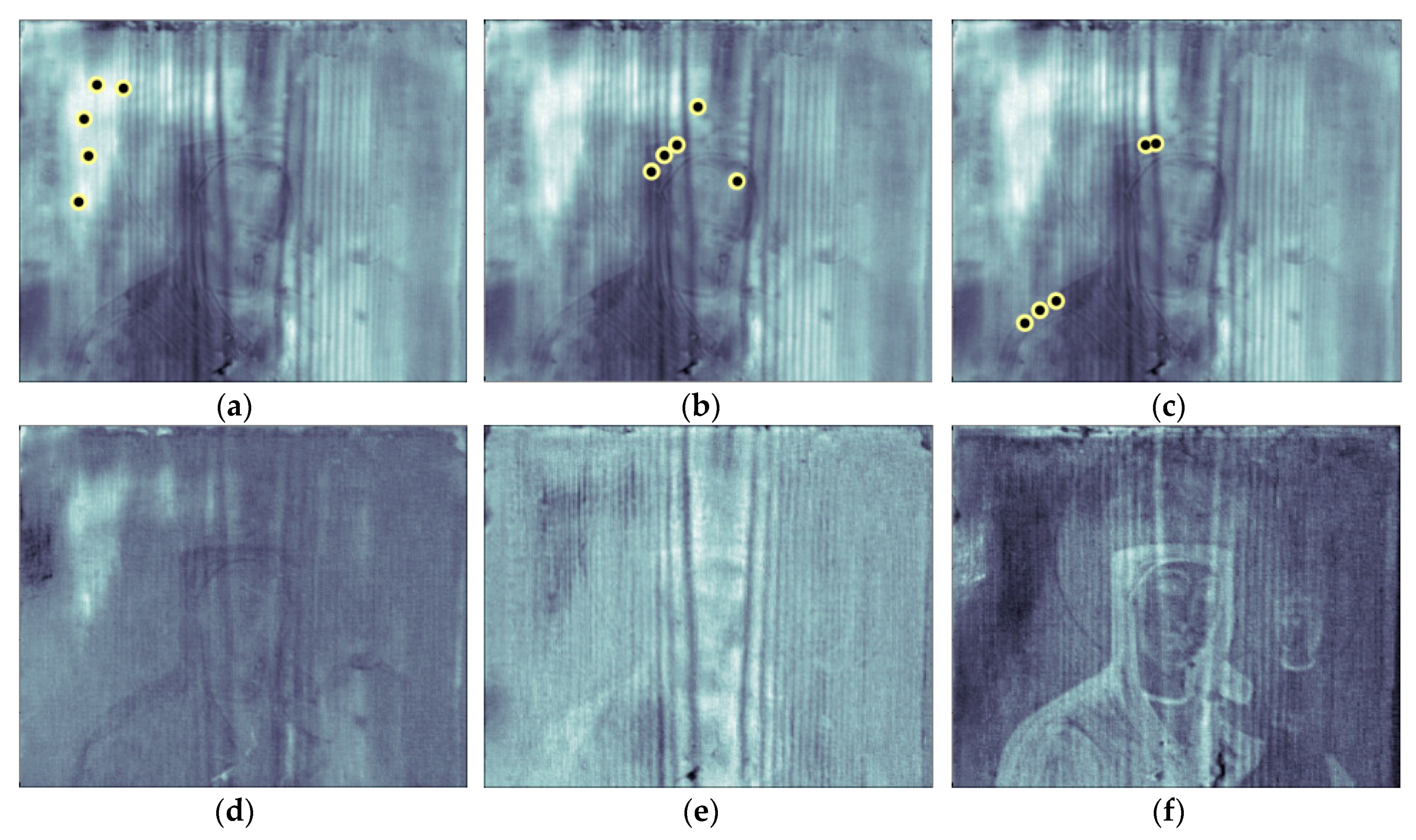

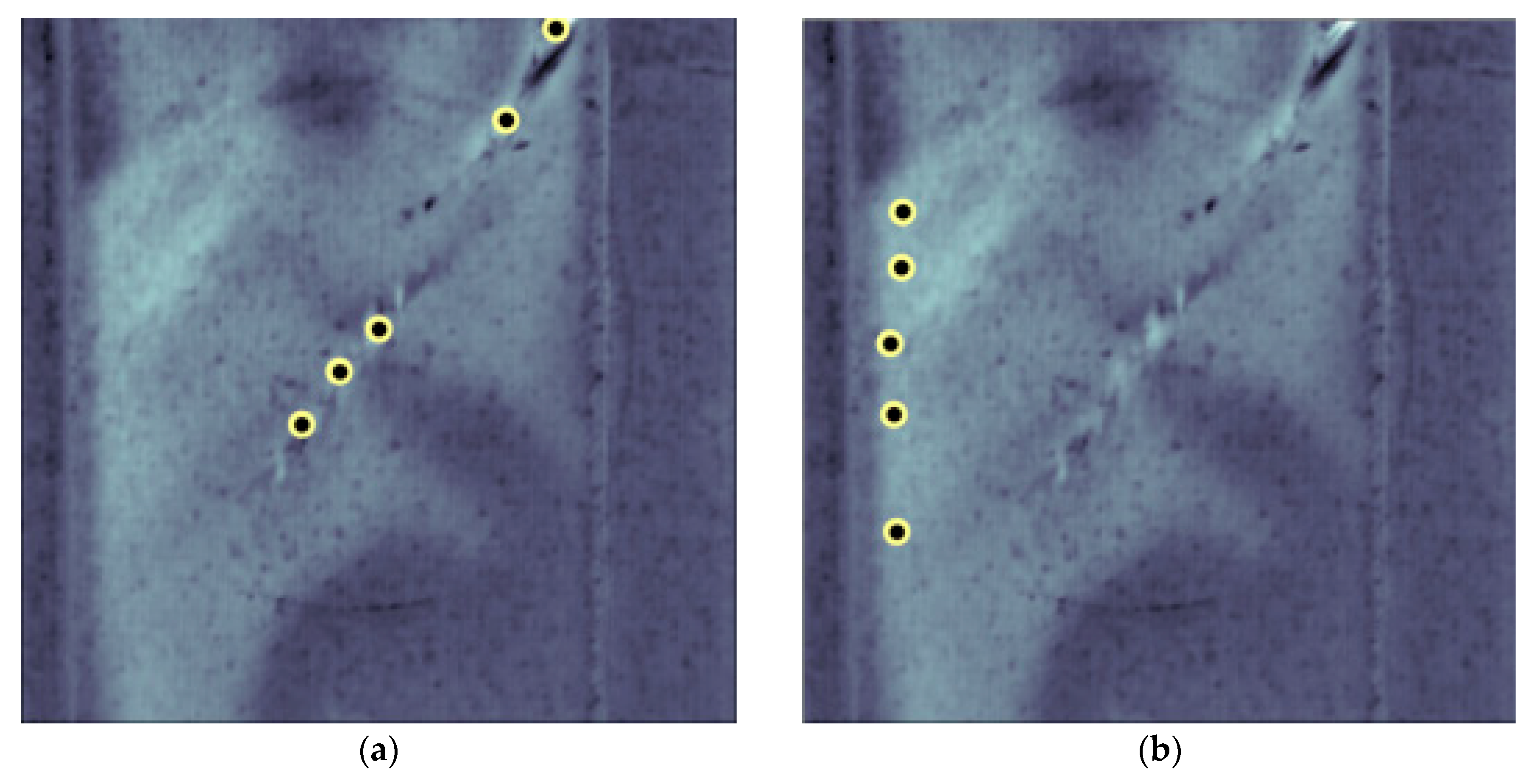
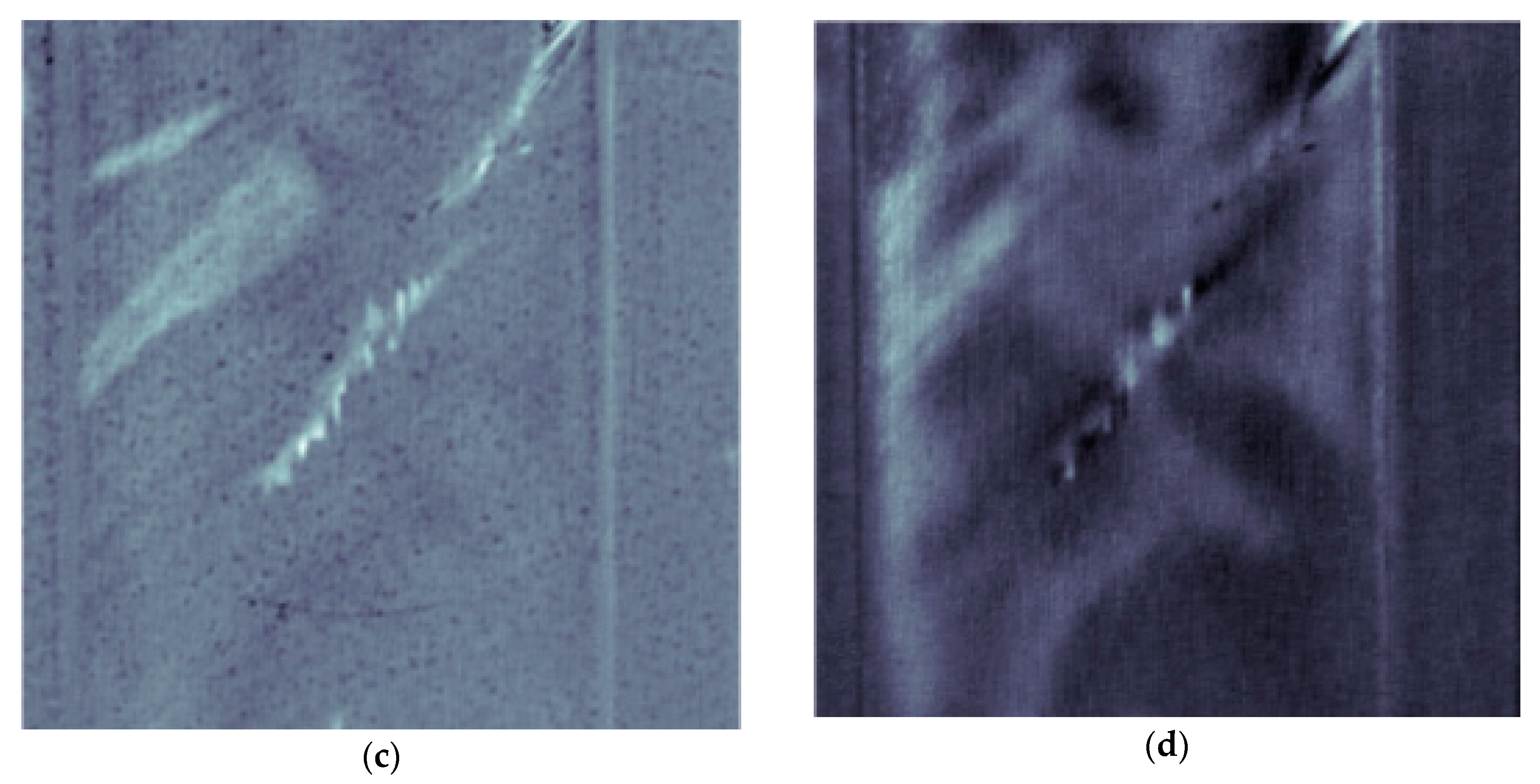
© 2018 by the authors. Licensee MDPI, Basel, Switzerland. This article is an open access article distributed under the terms and conditions of the Creative Commons Attribution (CC BY) license (http://creativecommons.org/licenses/by/4.0/).
Share and Cite
Gavrilov, D.; Maev, R.G. Extraction of Independent Structural Images for Principal Component Thermography. Appl. Sci. 2018, 8, 459. https://doi.org/10.3390/app8030459
Gavrilov D, Maev RG. Extraction of Independent Structural Images for Principal Component Thermography. Applied Sciences. 2018; 8(3):459. https://doi.org/10.3390/app8030459
Chicago/Turabian StyleGavrilov, Dmitry, and Roman Gr. Maev. 2018. "Extraction of Independent Structural Images for Principal Component Thermography" Applied Sciences 8, no. 3: 459. https://doi.org/10.3390/app8030459
APA StyleGavrilov, D., & Maev, R. G. (2018). Extraction of Independent Structural Images for Principal Component Thermography. Applied Sciences, 8(3), 459. https://doi.org/10.3390/app8030459



